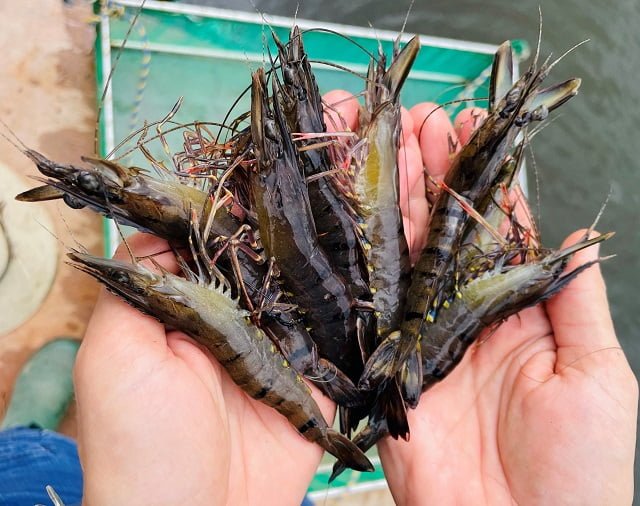Northern Australian aquaculture is set to increase its production five-fold to exceed $1.34 billion in value and produce more than five times its current volume of fish, prawns and other seafood products within the next decade – according to a new Cooperative Research Centre for Developing Northern Australia (CRCNA) report published today.
The Northern Australian aquaculture situational analysis report also found the growth of the industry would create 2,340 direct new jobs, at a range of skill levels – if the industry worked together to overcome identified challenges and capitalise on the opportunities outlined in the study.
CRCNA CEO Jed Matz said the research, led by James Cook University (JCU), has for the first time clearly articulated a future vision for the whole Northern Australian aquaculture industry.
“The project team has engaged with more than 400 industry players from across the aquaculture sector, including those from Indigenous communities.
“The outcome of this engagement is the delivery of a set of strategic and well-supported recommendations not only focussed on addressing impediments but also providing solutions to these challenges,” he said.
JCU Professor Dean Jerry said the willingness of industry participants to contribute to the research provided an unprecedented insight into the current state of play of the north Australian sector.
“The opportunity for the development of Northern Australia’s aquaculture industry is vast, with between 500,000 to 700,000 hectares suitable for marine farming in earthen and lined ponds and 50 times that available for freshwater operations.
Stay Always Informed
Join our communities to instantly receive the most important news, reports, and analysis from the aquaculture industry.
“Our best-case scenario outlined in this report is based on better utilisation of the available areas for expansion and growth of on-shore and off-shore facilities.
“A more coordinated approach across the sector is needed to support stronger biosecurity protocols and infrastructure investment, good RD&E and production outcomes, strong marketing efforts and an increase in global demand to fully realise our 2030 vision,” he said.
Robert Bell from commercial aquaculture advisors Blueshift Consulting said having a strategic industry plan will help the sector and the government attract investment in commercially viable projects.
“The key to success is matching the right species, systems, critical-scale infrastructure and market accessibility with the right investors, financial structures and terms. Further, government policy and facilitation, R&D, aquaculture operators, investors, and local communities must also align with Northern Australia’s natural and strategic advantages.
“We now have a strong body of evidence to support decision-making processes and to highlight what has and has not worked commercially across these areas in the past and what needs to change to ensure success moving forward,” Mr Bell said.
In addition to more significant biosecurity support and more infrastructure investment, the report highlighted the role Traditional Owners had to play in the industry’s future.
Indigenous Land and Sea Corporation (ILSC) Chairperson Eddie Fry said cross-sector collaboration and investment is vital to increase Indigenous participation in the aquaculture sector, especially as Indigenous Australians are responsible for managing 45 per cent of land and sea country in Northern Australia.
“Aquaculture has been practiced for thousands of years by Indigenous Australians and understanding how communities value fishing resources and fishing access is a key component to achieving greater participation of Indigenous people in commercial fishing.
“By translating traditional rights and interests into tangible economic and social benefits for communities, Indigenous Australians can achieve far higher levels of economic participation and wealth creation through employment, investment and enterprise development.
“We look forward to capitalising on the opportunities outlined in the report and continuing our support of Indigenous Australians to attract co-investment in commercially viable aquaculture projects that align with community aspirations,” Mr Fry said.
Professor Jerry said a vital lesson taken from the research project was the team’s approach to gathering the data and ensuring they engaged with the right people from across the industry. An approach, that he thinks, could be applied to other industry sectors – not just in Australia.
“The team’s approach in stakeholder engagement and the analytical methodologies for this report could easily translate to examine the developmental potential and challenges of other primary industries, or for understanding the steps for further development of aquaculture in Australia’s southern climes or our regional neighbours”.
Reference (open access):
Northern Australian aquaculture situational analysis. CRCNA. 103.
Source: CRC for Developing Northern Australia
Editor at the digital magazine AquaHoy. He holds a degree in Aquaculture Biology from the National University of Santa (UNS) and a Master’s degree in Science and Innovation Management from the Polytechnic University of Valencia, with postgraduate diplomas in Business Innovation and Innovation Management. He possesses extensive experience in the aquaculture and fisheries sector, having led the Fisheries Innovation Unit of the National Program for Innovation in Fisheries and Aquaculture (PNIPA). He has served as a senior consultant in technology watch, an innovation project formulator and advisor, and a lecturer at UNS. He is a member of the Peruvian College of Biologists and was recognized by the World Aquaculture Society (WAS) in 2016 for his contribution to aquaculture.




